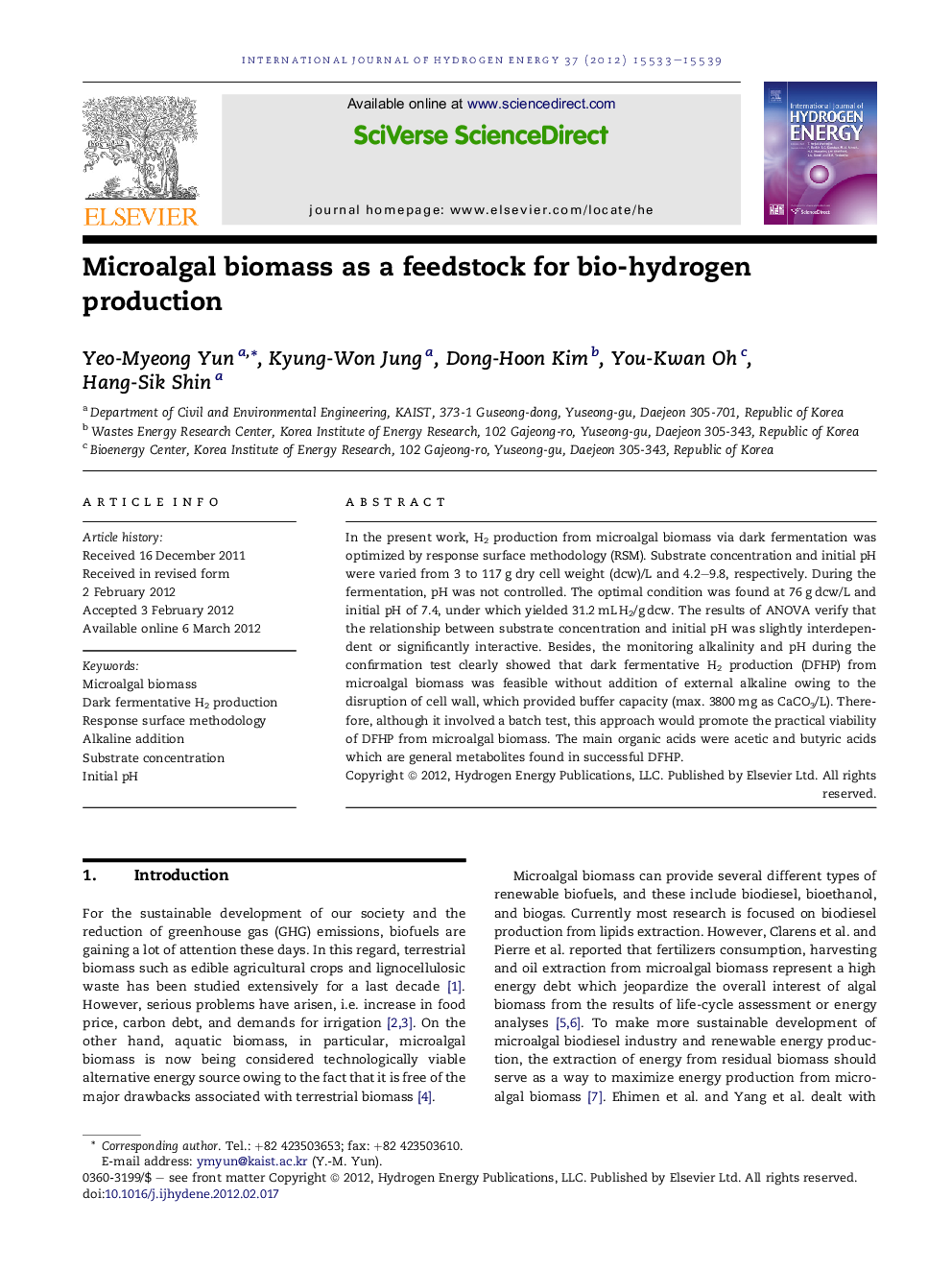| Article ID | Journal | Published Year | Pages | File Type |
|---|---|---|---|---|
| 1274563 | International Journal of Hydrogen Energy | 2012 | 7 Pages |
In the present work, H2 production from microalgal biomass via dark fermentation was optimized by response surface methodology (RSM). Substrate concentration and initial pH were varied from 3 to 117 g dry cell weight (dcw)/L and 4.2–9.8, respectively. During the fermentation, pH was not controlled. The optimal condition was found at 76 g dcw/L and initial pH of 7.4, under which yielded 31.2 mL H2/g dcw. The results of ANOVA verify that the relationship between substrate concentration and initial pH was slightly interdependent or significantly interactive. Besides, the monitoring alkalinity and pH during the confirmation test clearly showed that dark fermentative H2 production (DFHP) from microalgal biomass was feasible without addition of external alkaline owing to the disruption of cell wall, which provided buffer capacity (max. 3800 mg as CaCO3/L). Therefore, although it involved a batch test, this approach would promote the practical viability of DFHP from microalgal biomass. The main organic acids were acetic and butyric acids which are general metabolites found in successful DFHP.
► H2 production from microalgal biomass without control of cultivation pH. ► Estimation of H2 yield of 31.2 mL H2/g dcw at 76 g dcw/L and initial pH of 7.4. ► Production of high buffer capacity via disruption of cell wall. ► Achievement of successful H2 production without addition of alkaline solution.
